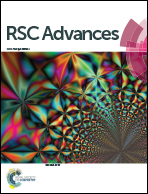Microwave-assisted hydrothermal crystallization: an ultrafast route to MSP@mTiO2 composite microspheres with a uniform mesoporous shell†
Abstract
An ultrafast, green and efficient microwave-assisted hydrothermal crystallization method was developed to convert the amorphous titania shell of MSP@TiO2 to uniform mesoporous anatase structure for highly selective and effective enrichment of phosphopeptides.


 Please wait while we load your content...
Please wait while we load your content...